Classics Quiz 4
1/58
There's no tags or description
Looks like no tags are added yet.
Name | Mastery | Learn | Test | Matching | Spaced |
|---|
No study sessions yet.
59 Terms
Rites of Passage
Liminality a time of reflection, which does not lead to acceptance all the time, but critique
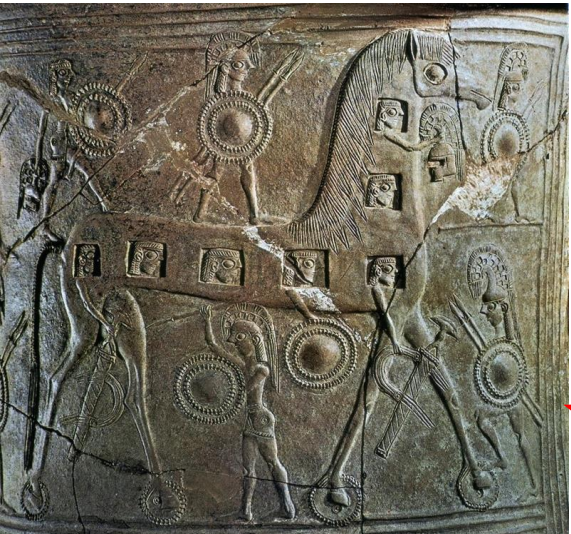
The Trojan Horse
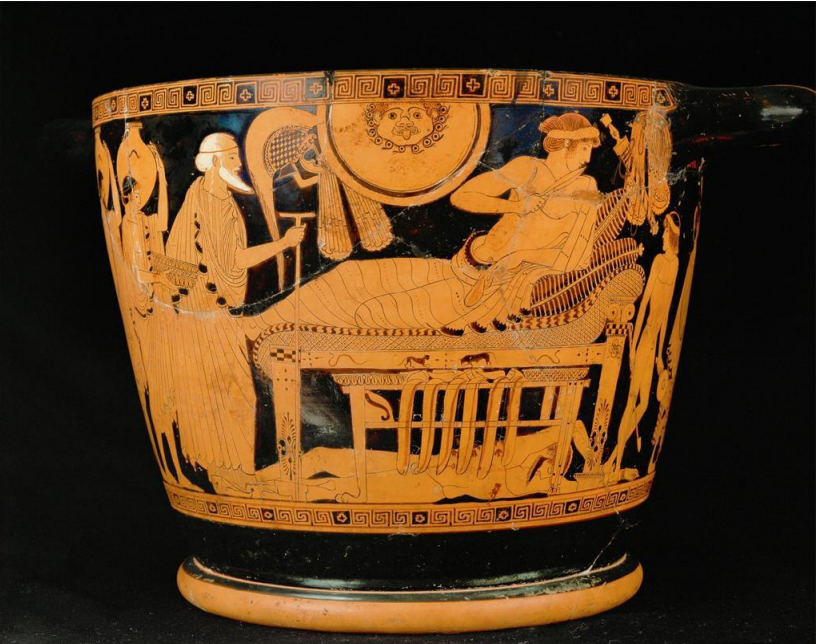
Priam begging Achilles for the body of Hector

Death of Hector
The Homeric Question
When the Homeric poems were composed –
Whether they were composed by a single poet or were instead originally shorter, independent poems that circulated and were transmitted orally for a long period before being unified into the long poems we have –
If this poet existed: who he was, when he lived, and what he was called •
BUT we will still speak of ‘Homer’ as the author of the Iliad and the Odyssey because this is what the Greeks believed, and this is his ‘traditional’ name
in media res
the technique of starting a story in the middle of the plot, rather than at the beginning
iliad: Tenth year: quarrel between Agamemnon and Achilles • Deaths of Patroclus and of Hector
The Iliad: key points and events
Book 1: quarrel of Agamemnon and Achilles; the gods on Olympus • Book 9: embassy to Achilles and Achilles' reply • Book 16: death of Patroclus by Hector • Book 22: death of Hector by Achilles • Book 24: Achilles and Priam; funeral of Hector
Aristeia
moment of excellence
Successful use of force against the enemy—excellence does not need to be (nor often is) moral excellence
timē
honor
the most important value for a Homeric hero. The honor and status others give to the hero
kleos
glory/reputation
the means through which the timē of a hero becomes visible to the others. Associated with the hero’s death.
geras
prize
aidos
shame
the hero must avoid it at any cost
agamemnon and menelaus
Menelaus—husband of Helen Paris: violated rules of hospitality; diminished Menelaus’ time and kleos
Agamemnon—arrogant—self centered
Achilles
He is characterized by excessive qualities → extreme love, extreme hate, shorttemper (Book 1) •
He forgets his human limits and duties → he rages against a river god and dishonors the dead (Hector: Books 22 and 24) •
Final meeting with Priam (Book 24) → ‘ human’ side of Achilles
He learns how to become a hero over the epic
Achilles dilemma
fight and die (a hero) or go home and live a life (not a hero)
Chryseis
Chryseis and Briseis are women captured as war prizes by the Achaeans (Greeks) during the Trojan War. Chryseis is the daughter of Chryses, a priest of Apollo, and Briseis is the daughter of Briseus. Both are taken as concubines, Chryseis by Agamemnon, the leader of the Achaeans, and Briseis by Achilles, a great Greek warrior.
Patroclus
His companion Patroclus, dressed in Achilles’ armor, is killed by Hector
Achilles returns to battle to avenge Patroclus

Aeneas, Anchises, and Ascanius

it depicts Aeneas carrying his elderly father Anchises and his son Ascanius as they flee the burning city of Troy.
Paris
Instigator of the Trojan War: violation of xenia
Judgement of Paris: honor goes to Aphrodite • Bribe: Helen •
Guest of Menelaus at Sparta • Abducts Helen and takes her back to Troy
Hector
Knows he is the best hope to save Troy, knows that he will likely die.
Battle with Achilles—loses courage and flees with Achilles chasing
Athena convinces Hector to stop running (Athena is pro-Greek)
Achilles kills Hector— the demise of Troy’s best warrior foreshadows the demise of Troy
Aeneas
Son of Anchises and Aphrodite/Venus
Father of Ascanius/Julius Ancestor of Julian clan G. Julius Caesar
Priam
In Greek mythology, Priam was the legendary and last king of Troy during the Trojan War
Shame Culture
One seeks to avoid shame (aidōs) for himself •
Highest good is the enjoyment of public esteem → honor (timē)
Result culture
One seeks success through glory (kleos) and prize (geras) → the individual is everything
Competitive values
Guilt Culture
One seeks to avoid sense of guilt Highest good is the enjoyment of a quiet conscience → moral standards
Intention culture
Notion of the ' greater good' → community is more important than individual
Cooperative values
The Aeneid
Aeneas, from Troy to Italy
Foreshadowing great role of Julian clan Dido (Carthage)
Foreshadowing rivalry between Rome and Carthage 1st, 2nd, and 3rd Punic wars in third century BCE
Books I-6: Odyssean
-Aeneas is a quest hero (Odysseus). Odyssey—wrath of Poseidon keeps Odysseus from his goal Aeneid—Wrath of Hera keeps Aeneas from his goal
-mission: to found a new city, a new Troy
-Encounters helpers and villains along the way
-Book 1: 7 years after the fall of Troy, Aeneas arrives at Carthage
-Books 2 and 3—tells the stories of his journey at a banquet (in medias res)
-Book 4: Aeneas lingers at Carthage—Dido–departs Carthage
-Book 6: Journey into Underworld
Books 7-12: Iliadic
Aeneas & Trojans at war with the Italians (Achilles & Trojan War) Turnus
Anchises
He is a Trojan prince and, in the Aeneid, a wise and devoted father who guides Aeneas's journey and helps him understand his destiny. He is also remembered for his love affair with the goddess Aphrodite
Turnus
the King of the Rutuli and the chief antagonist of Aeneas, the Trojan hero.
He is a skilled warrior and leader, known for his fiery temper and opposition to Aeneas's settlement in Latium.
Turnus is driven by a desire for revenge and honor, leading his people to war against the Trojans.
Dido
a clever and enterprising woman who flees her ruthless and autocratic brother, Pygmalion, after discovering that he was responsible for her husband's death.
A wise leader, she founds Carthage and makes it prosper.
Pallas
Pallas is the young son of Evander, a Trojan ally.
Pallas, along with his Arcadian allies, fights alongside Aeneas against the Rutulians.
Tragically, Pallas is killed by Turnus, the leader of the Rutulians, and his death deeply wounds Aeneas, fueling his rage and ultimately leading to Turnus's death.
Hera
Hera, known as Juno in Roman mythology, is a key divine antagonist.
She opposes Aeneas and the Trojans throughout the epic, fueled by her anger at Paris's judgment in the beauty contest and her patronage of Carthage, which is destined to be destroyed by Aeneas's descendants.
Juno's intervention often takes the form of stirring up storms, inciting conflict, and hindering Aeneas's journey to found Rome.
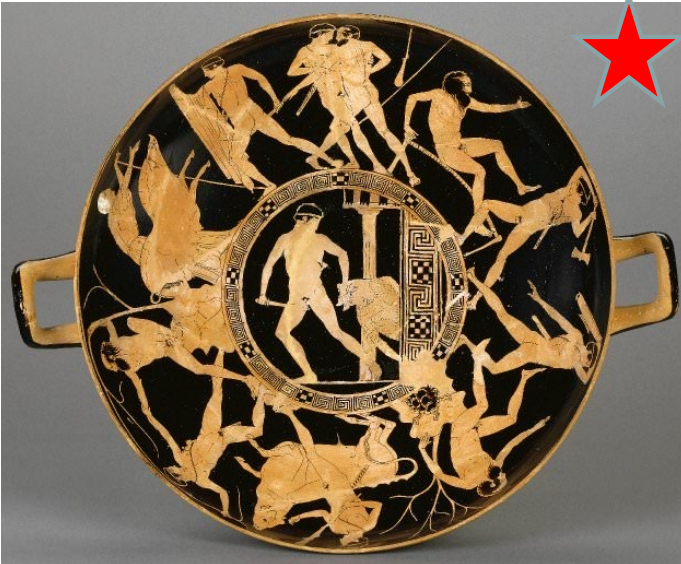
Theseus and his six labors and the killing of the minotaur
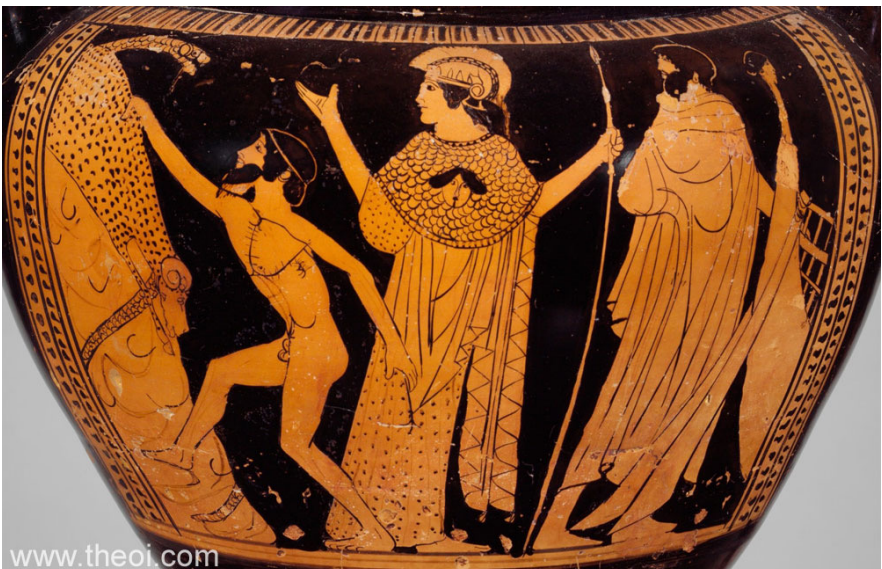
Jason obtains the Golden Fleece
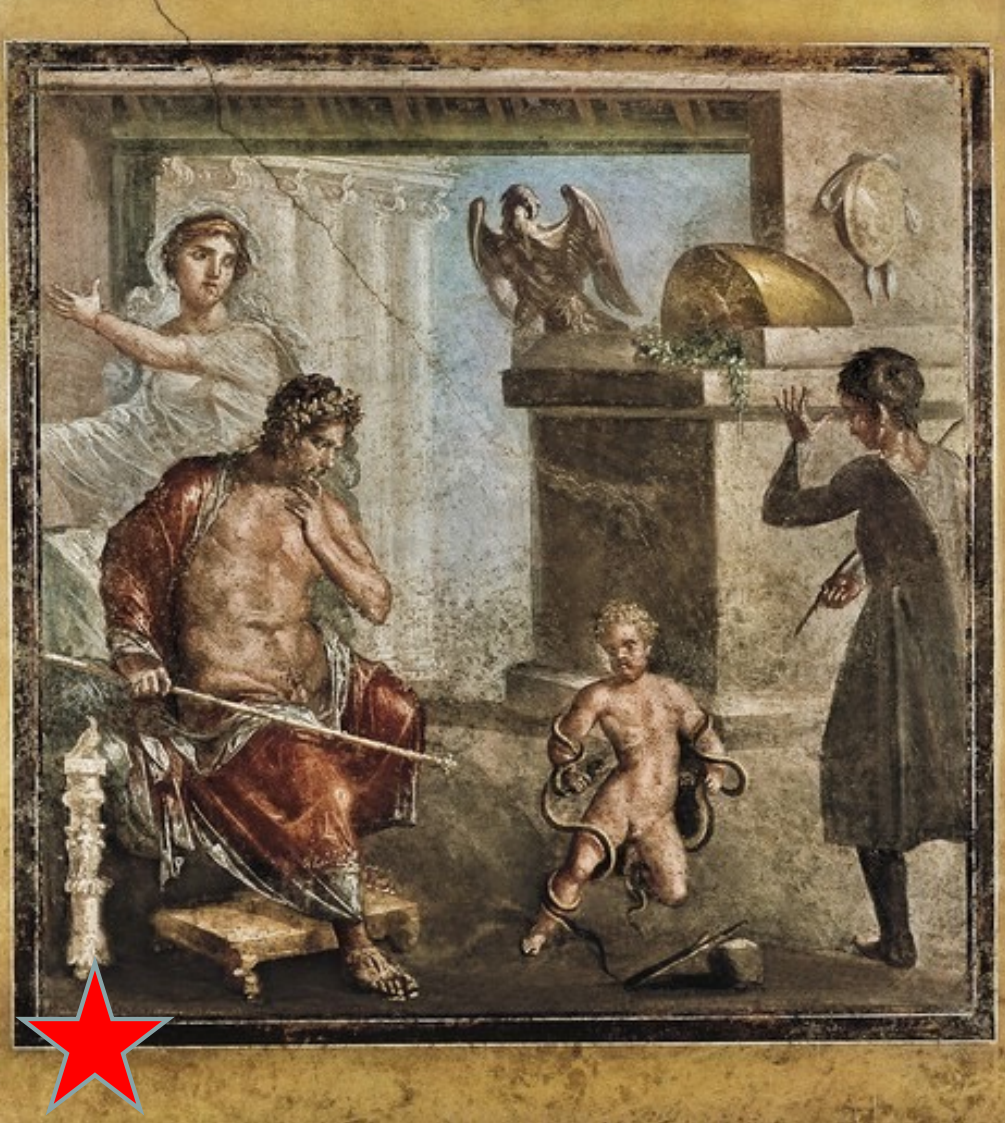
Rage of Hera
Sends snakes to kill baby Heracles
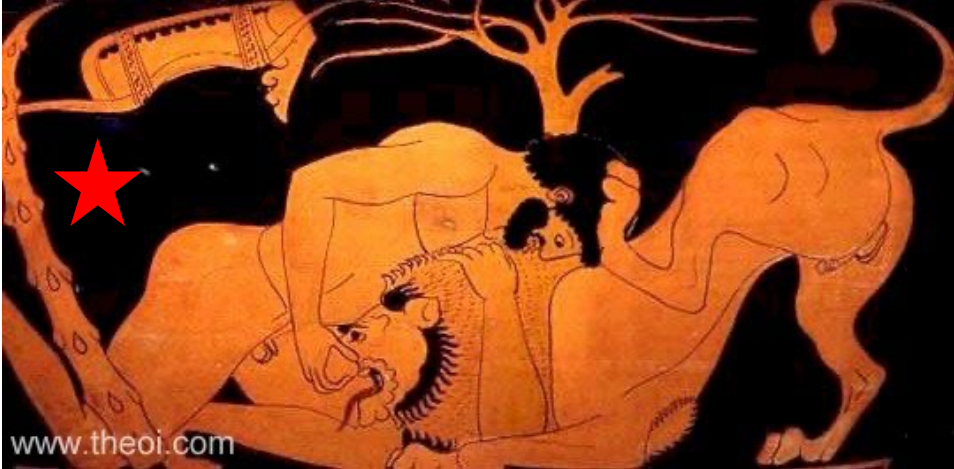
Nemean Lion—kills Impenetrable skin, becomes his ‘armor’
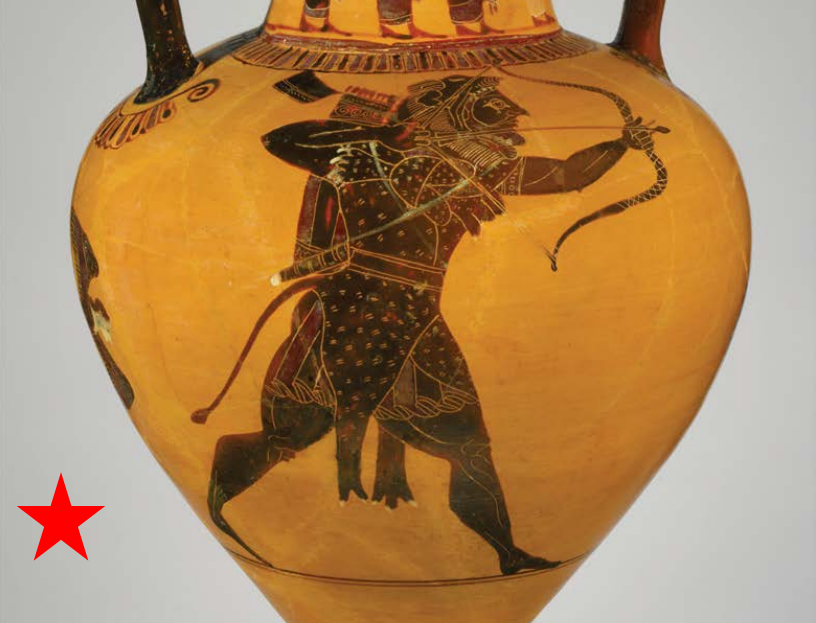
Herakles with the lion armor
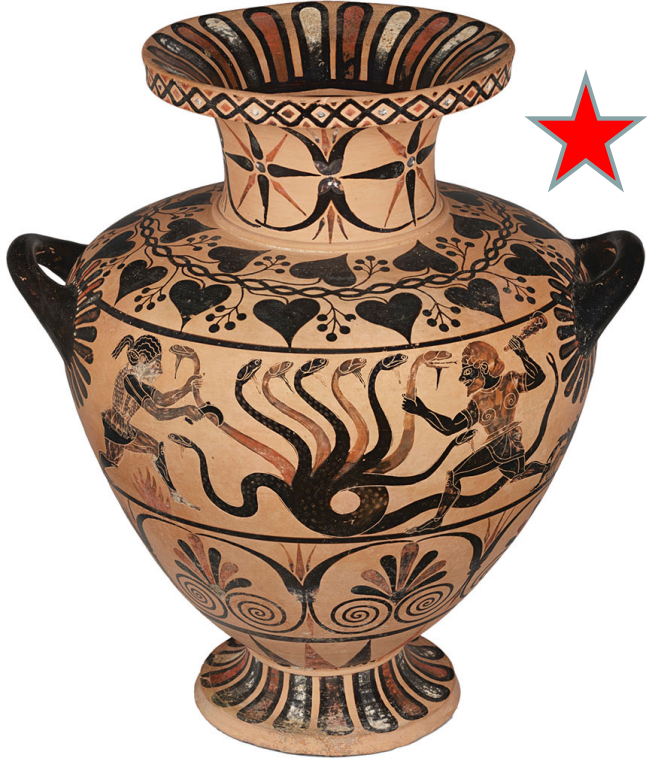
Herakles fighting the Hydra
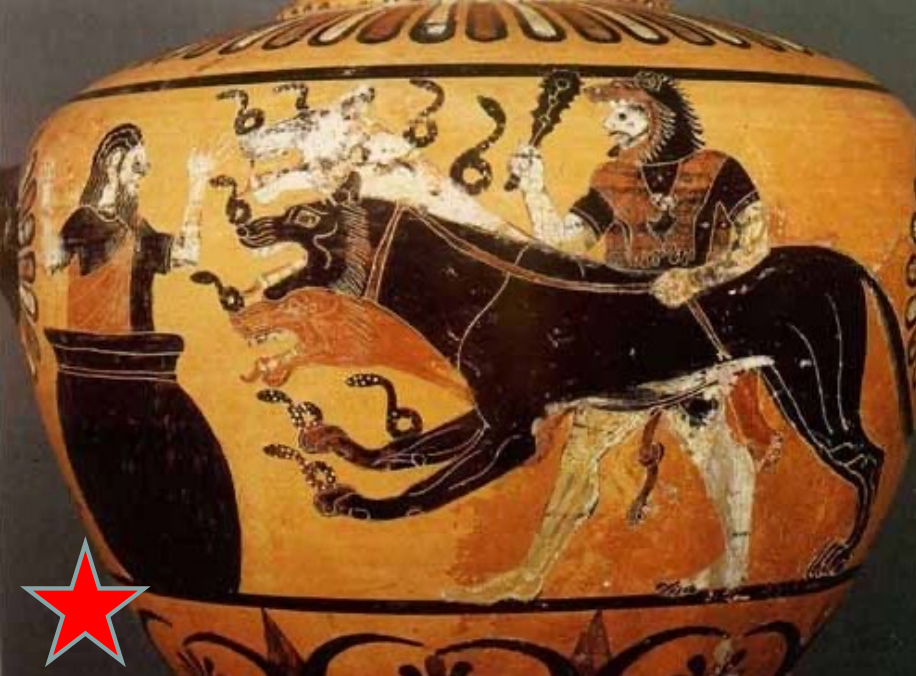
Cerberus **--capture enter the Underworld

Nessus, a centaur, was tasked with carrying Deianira across the river Evenus.
During the crossing, Nessus attempted to assault Deianira, but Heracles, Deianira's husband, intervened and shot Nessus with a poisoned arrow.
As Nessus lay dying, he tricked Deianira into believing that his blood was a love potion that would ensure Heracles' fidelity.
This act of revenge by Nessus led to Heracles' eventual death after Deianira unknowingly used the poisoned blood on a garment for him.

Pasiphaë and Daedalus
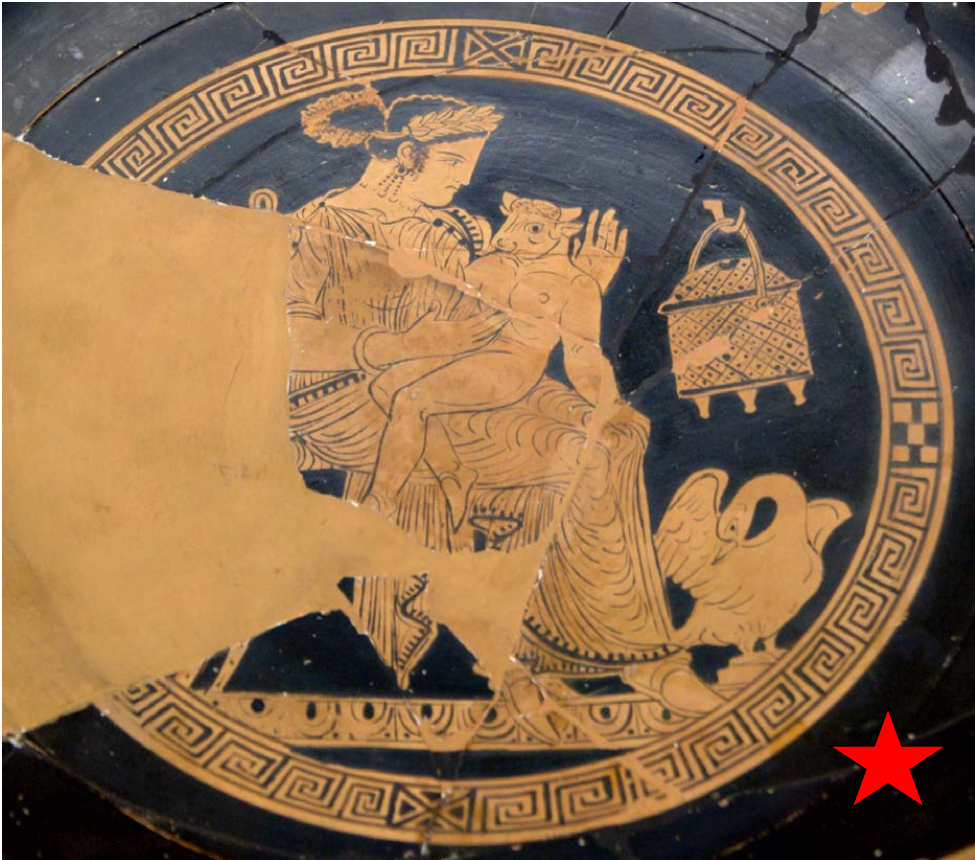
Pasiphae and the Bull
Poseidons’ bull not sacrificed He causes Pasiphaë to fall in love with the bull
Bull + Pasiphaë = Minotaur
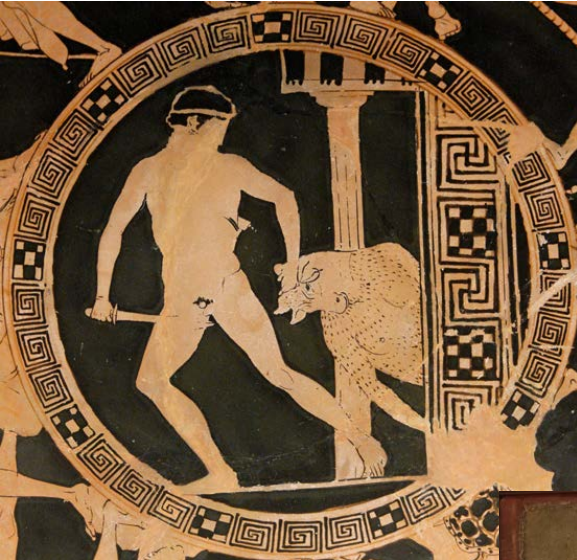
Theseus and the Minotaur
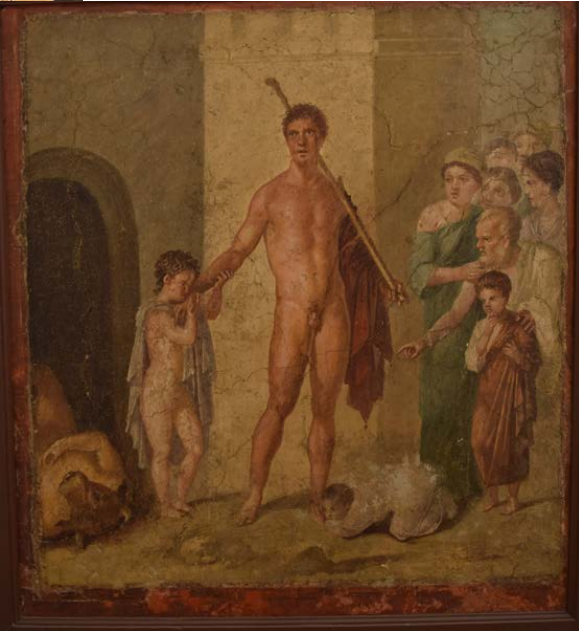
Theseus
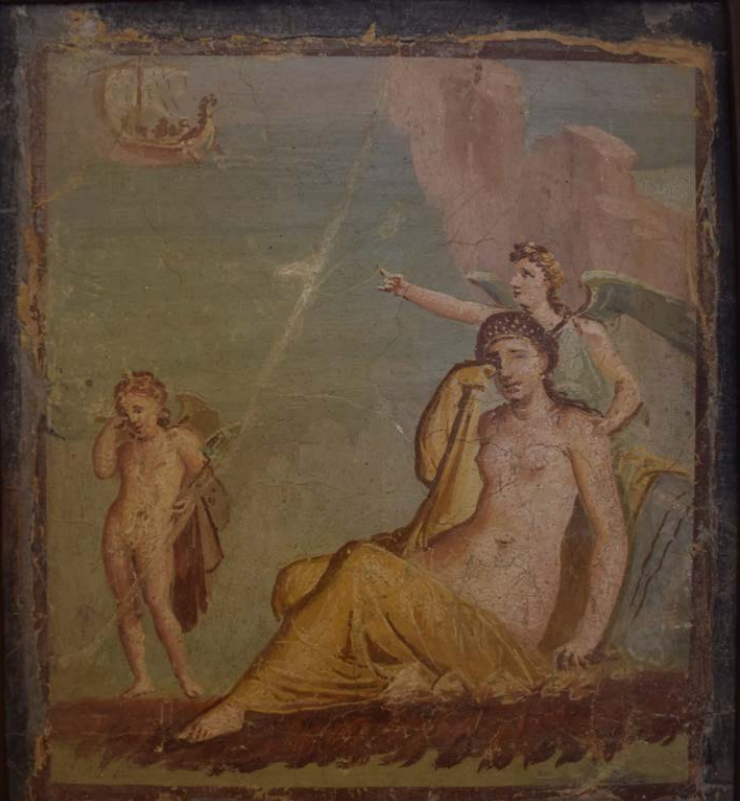
Theseus abandons Ariadne on Naxos

The painting captures the moment of abandonment, with Ariadne reclining and figures, possibly including Theseus, departing.

The Amazons
Characteristics of a Hero
Primary task is a journey; pursuit of a precious person or object – (i.e.: Golden Fleece)
Encounters others who either obstruct or aid his quest; undergoes trials
Story revolving around the hero is primarily devoted to describing a journey to achieve a goal or obtain an object/person
Villains
uncivilized or frightening behavior that threaten society
not human (giants, dragons, monsters) or hybrids (i.e. Medusa)
Found in wild spaces (not city) mountains, caves, sea (foreigners)
Exhibit wild behavior; act outside of social norms (female)
Helpers
Represent cultural ideals –
The female helper (princess, queen) – ideal feminine traits—help hero –
Often the hero abandons the female helper
Often the female helper turns out to be just as dangerous as the villain – fear of the uncontrolled female (e.g.: Medea)
Ambivalence—an aid but also a threat – Threat of delay – Threat of harm
Heracles
Son of Zeus and Alcmene
Rage of Hera Sends snakes to kill baby Heracles “Master of the Animals”
Causes him to go mad, kill wife/sons
*12 Labors to cleanse self of miasma
Nemean Lion
Nemean Lion—kills Impenetrable skin, becomes his ‘armor
Lernaean Hydra
The Lernaean Hydra—female monster (daughter of Typhoeus)
unruly female reproduction, resistance to Zeus’ (male) rule and marriage
Athena’s strategy: cauterize the necks so no more heads grow
Iolaüs: helper
Cerberus
Hercules (or Heracles) is known for his twelfth labor, where he descended into the Underworld to retrieve Cerberus, the three-headed dog guarding the gates of the realm of the dead
Eurystheus
He is best known for ordering Hercules to perform the Twelve Labors as a way to atone for Hercules' accidental murder of his family.
Augean Stables
For the fifth labor, Eurystheus ordered Hercules to clean up King Augeas' stables. Hercules knew this job would mean getting dirty and smelly, but sometimes even a hero has to do these things. Then Eurystheus made Hercules' task even harder: he had to clean up after the cattle of Augeas in a single day.
Nessos
Nessos—abducts Deianira – Heracles kills Nessos w/poison arrow – Nessos, dying: my blood is a love potion.”
Deianira
Deianira •
Nessos—abducts Deianira – Heracles kills Nessos w/poison arrow – Nessos, dying: my blood is a love potion.” – Deianira drenches his clothes •
It’s poison! •
Heracles suffers—”cries like a girl” – Athena escorts him to Olympus – APOTHEOSIS: the ascent of a deceased person to become a god; deification